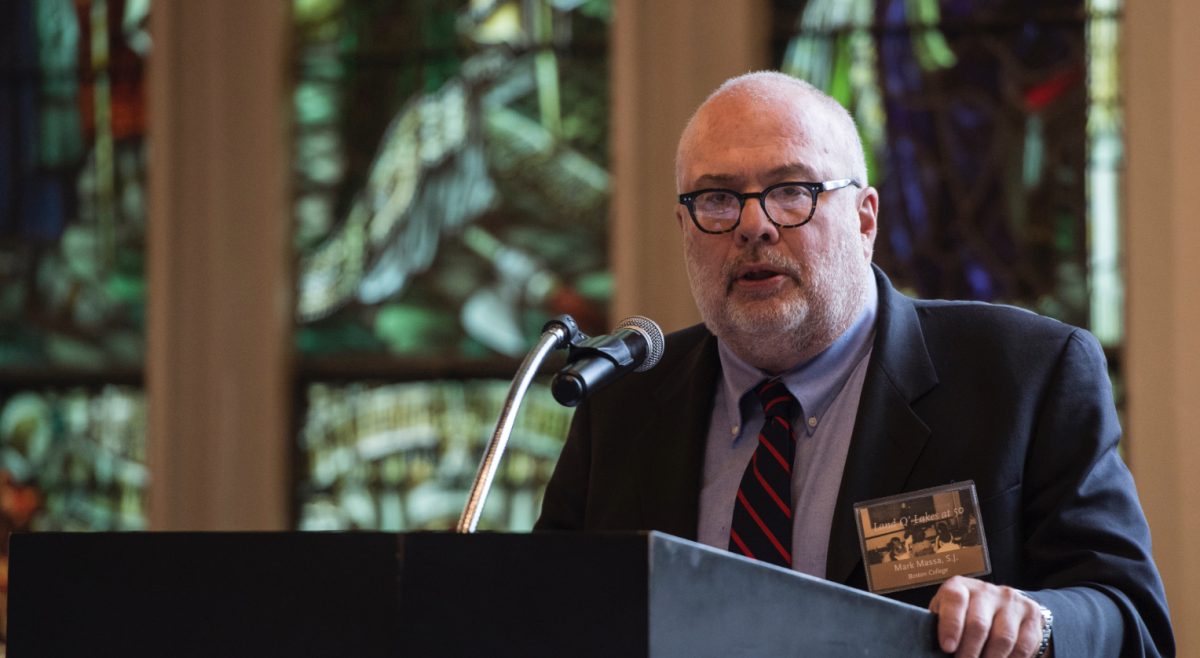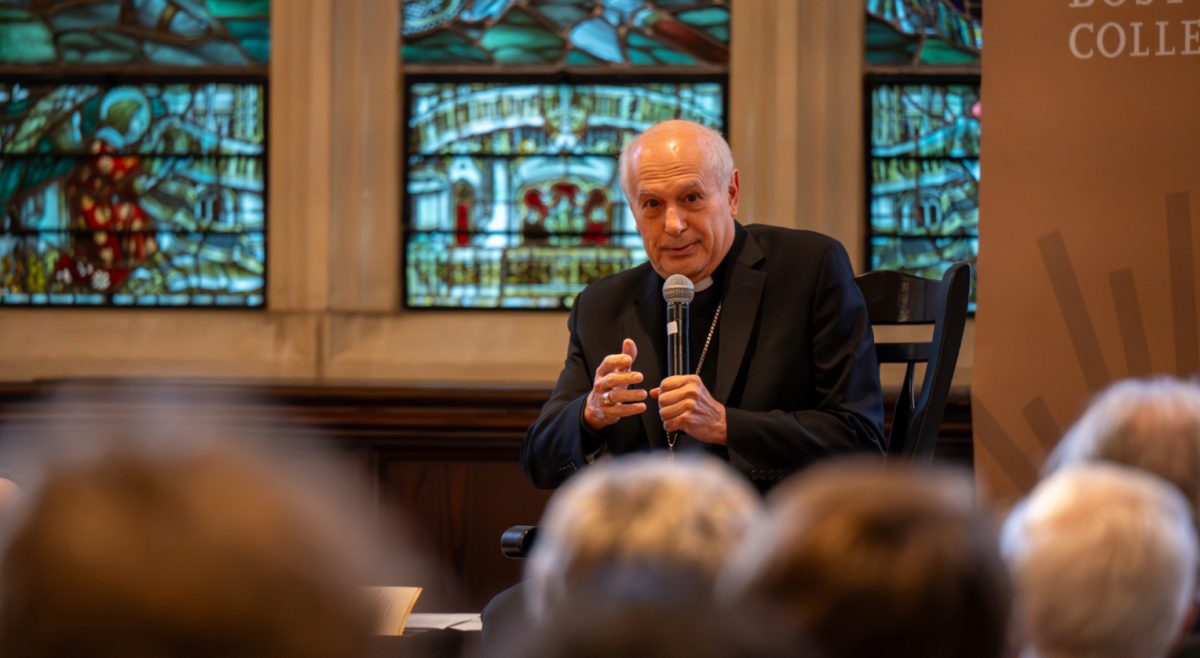UGBC President Nanci Fiore-Chettiar, A&S ’15, announced yesterday that the UGBC Executive Council—a group comprised of the president and all of the vice presidents—has decided to seek confirmation from the Student Assembly (SA) for the appointment of Connor Bourff, VP of Student Initiatives and A&S ’15, to the position of UGBC Executive Vice President (EVP), a position from which Chris Marchese, A&S ’15, officially resigned on Sunday.
In an open letter to the student body released yesterday, Fiore-Chettiar apologized for failing to follow the Constitutional guidelines for appointing a new EVP when she announced to all of UGBC on Sunday that Bourff would accede to the position, effective immediately. Bourff is now the Executive Vice President-designate, and SA will hold a confirmation vote this Sunday.
On Monday evening, the Executive Council met with the SA Leadership Conference—composed of the six committee chairs, the EVP, the President Pro Tempore of the SA, and the conference leader—to discuss how the Executive Council had handled the decision to appoint Bourff as Marchese’s successor, and whether constitutional considerations should dictate a change in procedure. Several of the committee chairs expressed concern over the constitutionality of the procedure that Fiore-Chettiar and the Executive Council used to select a new EVP.
“I went into [the Monday] meeting and I felt that I really needed to vocalize, you know, a little frustration,” said Alison Takahashi, SA Conference Leader and A&S ’16. “I feel like a lot of the [SA] members at the time wished that they had been included in the discussion.”
Takahashi said that, although she disapproved of the procedure by which Bourff was chosen, she believed he was the best person for the job. This sentiment was shared by Matt Hugo, Chair of the Policy Development Committee and A&S ’16.
Hagop Toghramadjian, Chair of the Academic Affairs Committee and A&S ’17, also disapproved of the process that the Executive Council used, but was more concerned with what would come next.
“My initial instinct—despite all my misgivings for the Constitution—is, and was, what’s most important is that UGBC continues to function, continues to be successful with its initiatives, and that this is our primary concern,” Toghramadjian said.
The process in question began last Monday—Nov. 10—according to Fiore-Chettiar and Marchese, when the Office of Student Involvement (OSI) informed them that Marchese had to either voluntarily resign or be removed by OSI for failure to meet the eligibility requirements for student leaders [Ed. Note: See accompanying story for more on Marchese’s resignation.] After that meeting and after informing the Council, Fiore-Chettiar said that they first tried to appeal the OSI decision.
“The Executive Council disagreed with that outcome, completely,” Fiore-Chettiar said. “We were all on the same page with that—we all disagreed.”
As a result of that meeting, Fiore-Chettiar said that they met the next day with Katie O’Dair, associate vice president for student affairs; Richard DeCapua, associate dean of students for student conduct; Barbara Jones, Vice President of Student Affairs; Gus Burkett, Director of OSI; and Mark Miceli, associate director of OSI and advisor to UGBC, to appeal OSI’s decision. The Council was not, however, able to convince the administrators to overturn OSI’s decision.
After it was clear that Marchese would have to step down as EVP, the Council began discussing who would succeed him on Thursday, starting with line of succession delineated in the UGBC Constitution. The Council discussed Mike Rosella—President Pro Tempore of the SA and the first in line—but decided not to ask him. As the next in the line, Martin Casiano, VP of Diversity and Inclusion and A&S ’15, was asked if he was interested, but he declined, according to Fiore-Chettiar. After that, Dhara Bhatt, VP of Student Organizations and CSOM ’15, was asked as the next in line. Fiore-Chettiar said that Bhatt also declined and that Bourff was discussed next.
“Connor showed some hesitation because he loves Student Initiatives, but he also realized that he made the most sense given all of [his] other qualifications and said that, if it was what was needed, he would step up,” she said.
The Council reached a unified conclusion, Fiore-Chettiar said, and presented their decision to the Leadership Conference that evening, when Marchese informed them that he was stepping down. According to several chairs that were at the meeting, the reaction was astonishment and concern about how the organization would move forward.
Only later was the question of the constitutionality of that appointment raised. Fiore-Chettiar and Bourff said that, at the time, they believed that they were operating in a constitutional manner. None of the chairs at the Thursday Leadership Conference meeting questioned this, but Isaac Akers, Chair of the Rules Committee—the SA committee responsible for upholding the integrity of the Constitution—and A&S ’16, was not present at that meeting.
“We were under the understanding from OSI, and specifically from [Burkett]—he was involved in the creation of the Constitution—that we got to pick, as an Executive Council, who the leader serving in that position would be, and that he would be the one to approve it, and we didn’t really question that at the time,” Fiore-Chettiar said.
It was only after Marchese informed the entirety of UGBC of his stepping down that the question of the constitutionality of the decision was raised. At the SA meeting after the UGBC general meeting, there was some confusion about the process, according to Takahashi. She said that Senator Nikhil Kanitkar, CSOM ’17, asked why Rosella had not been approached to succeed Marchese.
Fiore-Chettiar said that the discussion had not altered her understanding of the procedure, and that it was not until Monday that she reconsidered the constitutionality of the process.
It was at the SA meeting that Akers first learned about the appointment. He said that, after the meeting, he began reviewing the governing documents to understand how the Council might have reached its conclusion. Although he believed that Rosella should have been approached, he also said that the Constitution was vague on the matter. From his understanding of the document, OSI and SA—primarily through the Rules Committee—could interpret the Constitution, and after learning that OSI had been consulted, he decided that there were better ways that he could use his time.
In review, he did not agree that the procedure the Council employed was constitutional, however, and said that it was important that SA had a say in the process.
“I think there’s a reasonable argument to be made that the way they chose to proceed was not in accordance with the procedures that I am tasked with understanding and safeguarding,” Akers said. “And I didn’t think that the entire procedure was done in a way that was transparent.”
He also said that the Council should have sought SA input sooner, but that it was important, nonetheless, that they were seeking approval now.
As a result of the controversy that arose surrounding this process, Fiore-Chettiar stated that the Rules Committee would revisit the Constitution over Winter Break. Akers said that he would be spearheading the revisions.
“I want to make sure this is a process that is open, transparent, and accessible to feedback on the workings of the current document for the people that are in [UGBC],” Akers said.
Editor-in-Chief Eleanor Hildebrandt and News Editor Connor Farley contributed to this article.
The original version of the article did not properly identify Mike Rosella as the President Pro Tempore of the Student Assembly.
Featured Image by Emily Fahey / Heights Editor


















